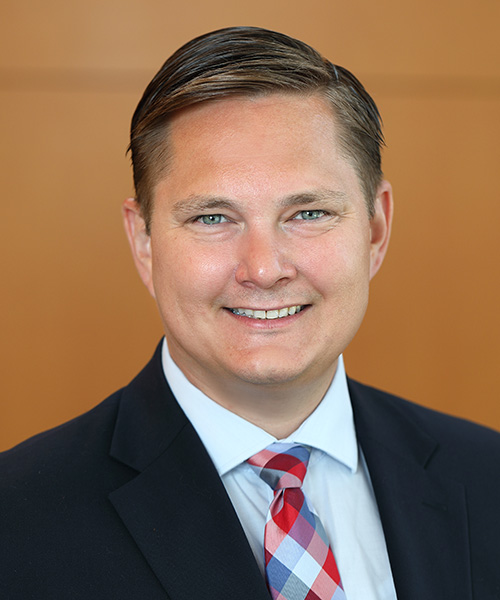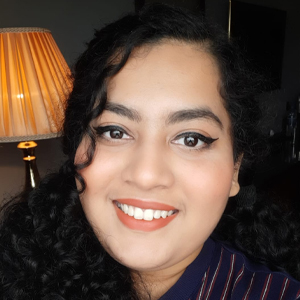The best of both worlds
Blake Warner, a clinician–scientist, holds a D.D.S. and a Ph.D. He is chief of the Salivary Disorders Unit and the Sjögren's disease clinic at the National Institute of Dental and Craniofacial Research, National Institutes of Health. This interview has been edited.

Did you like science as a child?
I always liked science. My third-grade teacher, Mr. Schmidt, let a kid who was curious about science, be a little self-directed. I learned from him how circuits and switches worked. It was the first time I thought, “I want to keep doing this.”
I studied biochemistry and molecular biology at the University of Miami in Oxford, Ohio. I loved the organic chemistry lab there. Its research was deriving and synthesizing deep sea sponge heterocyclic compounds as anticancer and antitumor reagents. I got to use cool tools like nuclear magnetic resonance.
Why did you pursue dental school?
In college, I liked tinkering in a lab but didn’t like doing it alone.
I was teaching water fitness classes where I liked helping people and focusing on their health. This made me think I should do something patient-centric — medical school or dental school.
I started doing rotations with physicians and dentists and found I was interested in the oral cavity. The mouth has many parts and several things that can go wrong — from cavities’ connection to sugar intake and bacteria to the development of oral cancer as a consequence of smoking and alcohol intake.
So, I applied to dental school. I got waitlisted, partly because my GPA was too low. I tried twice, but I didn’t get in.
Then you decided to do a master’s in public health?
As I said, I like interacting with the public. I also did not like that addictions and behaviors in the world contribute to negative health outcomes. So, I decided to do a master’s in public health, in a specialty called health behavior health promotion.
I liked the classes, but I realized that human beings are a tough organism when you want them to change what they do. It takes a very patient person. I am not so super-patient. So, I changed to a discipline more associated with the hard sciences: environmental health and epidemiology.
This gave me the opportunity to do research in a lab that studied oral cancer. My project used animal models to study how to prevent oral cancer using natural products — another theme that I liked.
By the time I got my M.P.H., I knew I wanted to be a scientist and a clinician. My mentor said, “Why don’t you convert your master’s to a Ph.D.? Spend one solid year finishing the coursework and experiments, and then we’ll figure out the rest.”
What came next?
I got accepted into dental school while I was focusing on my Ph.D. I finished both within five years.
I liked surgery because it’s immediate. As an analytical person, I liked oral and maxillofacial pathology. So, I did the oral pathology clinical residency program at the University of Pittsburgh. I spent a third of my time in the dental school seeing patients and doing biopsies, a third in surgical oral pathology learning to evaluate tissues and the rest in the hospital doing rotations with the main pathology benches.
I liked integrating the clinical data into what I saw on the glass — using the microscope as a research tool. Pathology really is N-of-1 research, where you’re looking for a certain pattern. When you find it, you verify whether that patient has this pattern, yes or no. If it's a no, that triggers the next study.
I was a pathology resident using the light microscope as a discipline and a research tool, and I wanted to find a lab that allowed me to do this.
Ultimately, a combined residency and postdoc was too challenging administratively. I stepped back to finish the residency in three years and a postdoctoral fellowship afterward. Then I needed a pathway to independence.
And you landed at the National Institutes of Health?
I heard long ago that the NIH has a fellowship with a focus on clinical research. I love the clinic and basic science research, and I like to interface with patients.
At a science conference, an oral pathologist told me to talk to a principal investigator at NIH. The PI told me about an open position and asked if I could do a very specialized procedure. I said I’d done it one time and I could do it again.
So, I got recruited to work in a clinical trial using gene therapy to treat radiation-induced xerostomia, or dry mouth. They were introducing a human aquaporin gene into the salivary epithelium directly, to allow an unregulated pathway for water to physiologically follow the salt gradient created by the impermeable ducts of the salivary glands. This was reengineering the salivary glands to function better, and it required me as a dentist to use my hand skills to introduce the vector retroactively, in the opposite direction, in that gland.
And that was it. I was a clinical investigator — even though I was a trainee. I loved it so much that I moved to Maryland, right across the street from the NIH.

When my clinical mentor left NIH, they needed someone to run the Sjögren’s clinic. I was already working with Sjögren’s (an autoimmune disorder that causes dry eyes and mouth), and I was interested in the salivary gland as a model organ of investigation. I let them know that I was available. They hesitated since I was only a fellow, but I assured them I could do it.
Science is like this. You must take a leap of faith sometimes, jump into the deep end of the pool and start swimming. And it worked out. I got to reorganize the clinical program and learn how to write, command, administrate a clinical protocol, hire people and manage clinical care and research.
You worked with SARS-CoV-2 during the pandemic and published articles about the infectivity of saliva. How did your previous research lead to that?
Viral infection is a risk factor for the development of Sjögren's disease. So, essentially, we back threaded. This allowed me to learn how a virus that has tropism for the salivary glands can alter its function or potentially cause inflammation, and how similar that inflammation is to what we find in Sjögren's disease.
I had single-cell RNA sequencing data sets from the salivary glands. In February 2020, ACE2 was identified as one of the receptors. I used our single-cell data and figured out that this virus could infect the salivary gland, so we could use saliva as a testing model. I began a clinical study to test the staff that were required to come to the hospital. We began collecting saliva, paired with nasopharyngeal swabs. Through speaking exercises, we collected droplet particles to measure the potential of a droplet to cause infection.
What we realized very early on is that, by the time people were symptomatic and recovering, infectious variance, the probability of the infected individual infecting others, was very low.
So, I had a suspicion that most people who were infected were walking around asymptomatically. We started doing asymptomatic testing. It is only then that we caught that, saliva, at a very early time point, probably earlier to most symptoms, was very infectious. We published our findings in Nature Medicine.
What advice would you give to young scientists?
Be flexible and honest with yourself. Take risks, but only after you know what you want to do in life. At 18, I thought I wanted a lot of things. I tried them, but they never got me inspired.
And remember that it's okay to say no. It’s also okay to say not right now. You can be interested in something, but you have to decide when to do it — right now or later. Find your timeline.
Be passionate about what you do. It is unimaginable for me to have a career for 30 years and not be passionate about it. We have such short life spans. So, do something that is fun, creative, good for you and good for humanity.
Enjoy reading ASBMB Today?
Become a member to receive the print edition four times a year and the digital edition monthly.
Learn moreFeatured jobs
from the ASBMB career center
Get the latest from ASBMB Today
Enter your email address, and we’ll send you a weekly email with recent articles, interviews and more.
Latest in People
People highlights or most popular articles

Building a stronger future for research funding
Hear from Eric Gascho of the Coalition for Health Funding about federal public health investments, the value of collaboration and how scientists can help shape the future of research funding.

Fueling healthier aging, connecting metabolism stress and time
Biochemist Melanie McReynolds investigates how metabolism and stress shape the aging process. Her research on NAD+, a molecule central to cellular energy, reveals how maintaining its balance could promote healthier, longer lives.

Mapping proteins, one side chain at a time
Roland Dunbrack Jr. will receive the ASBMB DeLano Award for Computational Biosciences at the ASBMB Annual Meeting, March 7–10, just outside of Washington, D.C.

2026 voter guide
Learn about the candidates running for Treasurer-elect, Councilor and Nominating Committee.

Meet the editor-in-chief of ASBMB’s new journal, IBMB
Benjamin Garcia will head ASBMB’s new journal, Insights in Biochemistry and Molecular Biology, which will launch in early 2026.

Exploring the link between lipids and longevity
Meng Wang will present her work on metabolism and aging at the ASBMB Annual Meeting, March 7-10, just outside of Washington, D.C.

